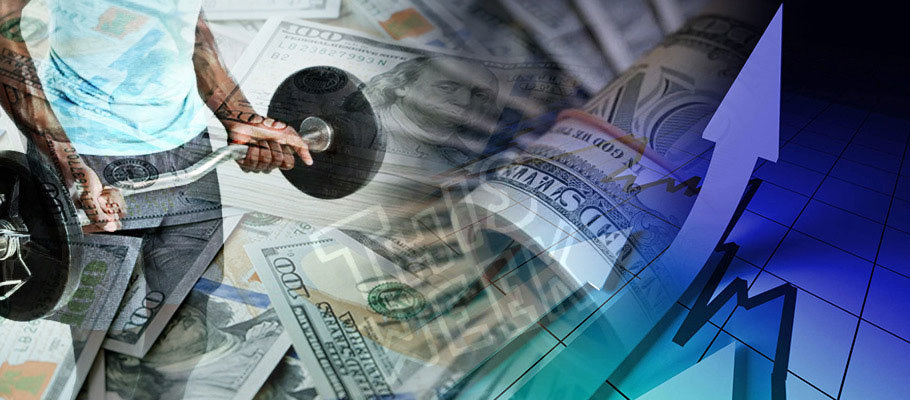
Published: June 14th, 2023
Analysts at London-based Capital Economics see a positive trajectory for the Greenback this week, with key events on the horizon including policy meetings by the European Central Bank (ECB) and the Bank of Japan (BoJ). Both are expected to influence thinking at the US Federal Reserve.
In a market commentary, the research firm said the ECB is expected to hike interest rates on Thursday, and many analysts expect at least one more 2023 rate rise after this one. Frankfurt’s decision will follow a US inflation data print and potentially determine whether the US Federal Reserve will pause or set the stage for another rate hike down the road.
‘Consensus sees the Fed keeping rate hikes on hold and most analysts expect the Bank of Japan to hold the line as well; however, a few holdouts are looking for the BoJ to make an adjustment to yield curve control on Thursday.’
Noting the complexities around the Fed’s decision, Capital Economics says recent data has supported arguments for both a pause on interest rate hikes, and a rise.
When the wider market outlook is considered, it underscores the impact of G10 monetary policy and inflation on the Greenback’s performance. "For Dollar bulls, Fed decisions weigh heavily on trading decisions. However, US growth is stubbornly strong, and inflation has been sticky. Traders have to look at the Fed's base case, which is higher for longer. That’s a positive for USD.’
The US Dollar Index (DXY) has retraced recently. After a recent ascent towards 105, it's now falling back slightly around the 100-day moving average to touch 103.38. Capital Economics believes that unless a dovish pause happens, USD will regain strength throughout the week, possibly surpassing the 105 level.
In February, analysts at global investment bank Mitsubishi UFJ Financial Group (MUFG) pegged the Dollar to push back against a resurgent Euro. EUR, they said, would remain on the back foot as USD staged a comeback from late January.
Forex traders, they said, were shrugging off the imminent release of minutes by the US Fed’s open markets committee and downplaying the impact of recent PCE deflator data. MUFG said all signs pointed to a period of Dollar dominance.
‘The upward adjustment to a higher terminal rate and cooling rate cut expectations for later in 2023 have spurred new life into the strong USD trade we saw at the end of 2022,’ says MUFG’s briefing.
Adding wind to USD’s sails is a lifting of investor expectations about the timing of the Federal Reserve's peak interest rate hiking cycle.
In January, consensus had the last rate rise set for March, but an additional two hikes have since been added to the table. The likelihood of a rate cut in the latter part of 2023 has receded, giving the Dollar support after an underwhelming end to 2022 and beginning to 2023.
EURUSD rushed toward 1.10 in January but had fallen back by early February as new US economic data flummoxed analysts, who sent mixed signals into the market.
A surprising mix of strong wage data, labour market dynamics, inflation figures and retail sales suggested the American economy was robust enough to achieve the Fed’s above-target inflation levels. EURUSD started to retrace previous gains as a result.
‘Stronger American growth data blended with firmer inflation at the beginning of 2023 has added optimism to markets. Forex traders are now pricing-in a more hawkish outlook for Fed policy’.
Last March, high oil prices were pushing the Euro toward multi-year lows as forex traders bet that the European Central Bank would delay plans to raise interest rates later in the year.
Prices for Brent Crude surged above USD 130 per barrel in March 2022, the highest level for almost 13 years. Wholesale gas prices meanwhile more than doubled from the previous month on fears that the US would impose an unequivocal ban on Russian oil.
The White House did move forward with plans to ban purchases of Russian oil and gas, with other G7 countries following suit. European natural gas prices responded by hitting an all-time high.
In a note to investors, the FX Strategy unit at Crédit Agricole wrote that news of major Western importers considering coordinated sanctions against Russian energy exports sent oil and other commodity prices soaring, especially in Asia.
‘Conjecture around ramped up sanctions in the energy sector has started with a bang. Stocks have tumbled and crude prices are soaring on Asian markets as traders' price-in the impact of a US and EU ban on Russian crude supplies’.
In response to the supply shock, Crédit Agricole said a ‘binary move’ in currency markets was underway, one that favoured the fiats of energy exporting countries. Net energy importing countries, in contrast, would see their currencies take a hit.
In a weekly currency research briefing note, Barclays said at the time that the Ukraine conflict had delivered a negative EUR shock.
‘In the near term, the Euro has scope to trade lower given the potential stagflation effect on the Eurozone. Looking further ahead, the war could compel more structural integration by member states that provides EUR with support.’
The USD to Euro exchange rate reached 1.2177 on Tuesday 8th March, the highest level since June 2016. The Euro to Dollar rate dipped to 1.0857, the lowest level since April 2020.
Economists expected surging oil and gas prices to drag the Eurozone economy downward due to its reliance on Russian gas and deep integration with Russia's energy industry.
There were also concerns in the market that a dip in Eurozone economic growth could see the ECB cool enthusiasm for its planned post-COVID normalisation of monetary policy. A change in course might have limited Eurozone bond yields and pulled the Euro down further.